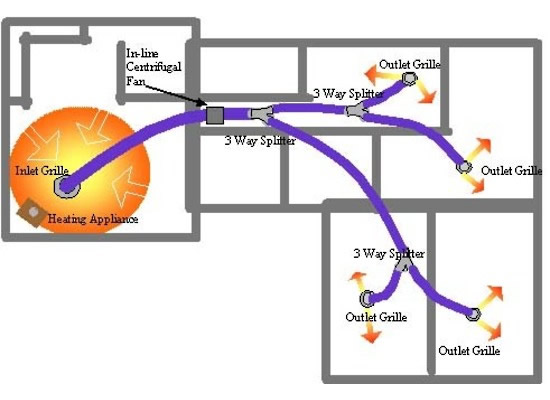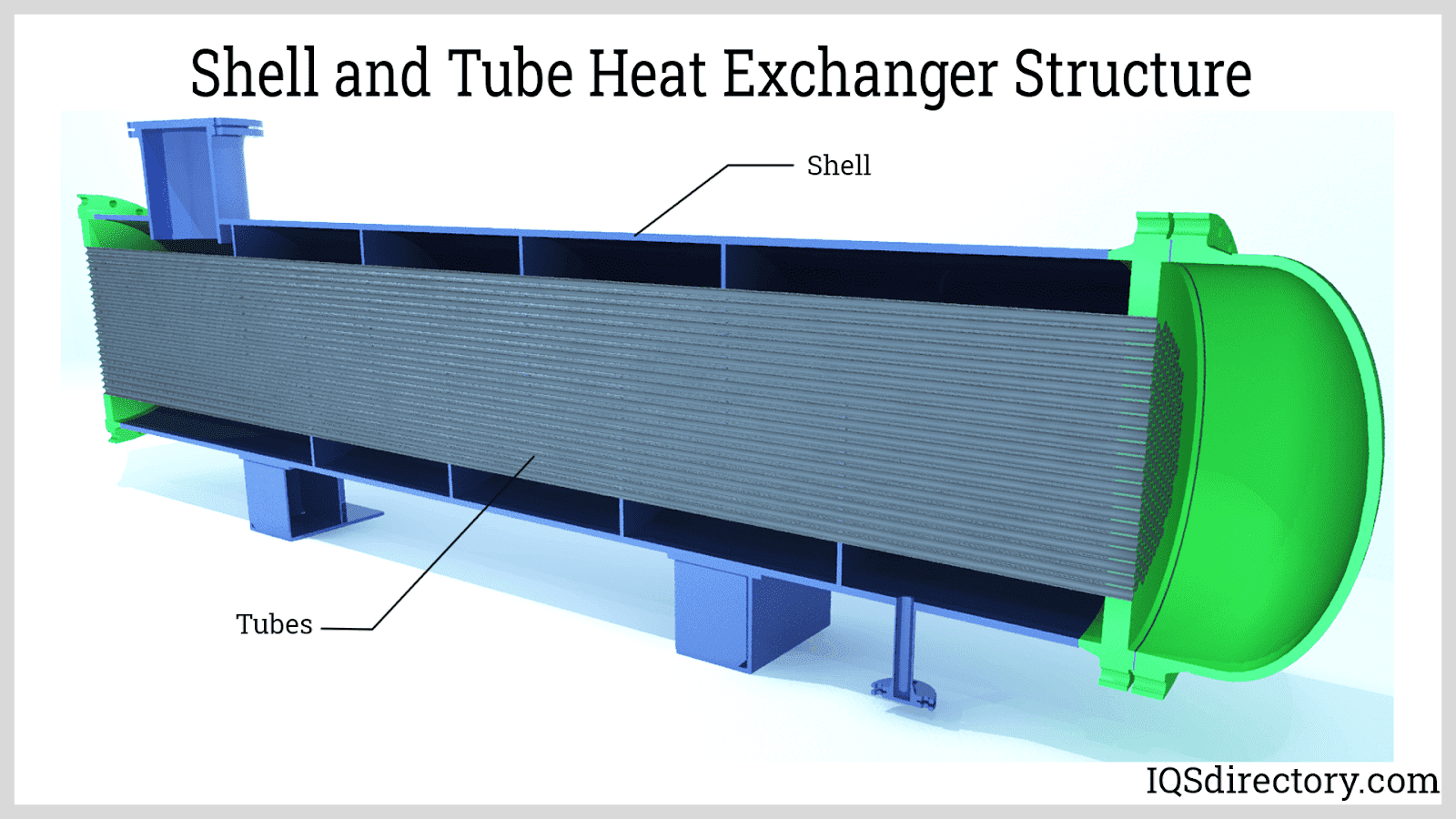Why Choose DVS Heat Transfer Systems for Compact Heat Exchanger Designs
The Duty of Heat Transfer Systems in Sustainable Power Solutions for the Future
Heat transfer systems are vital in the mission for sustainable power solutions. They maximize thermal energy monitoring, improving the efficiency of renewable modern technologies. By employing mechanisms like transmission, radiation, and convection, these systems reduce power losses. Their function in solar thermal and geothermal applications is particularly substantial. As innovations emerge, the potential for additional advancements elevates crucial concerns concerning future energy strategies. What growths will shape the landscape of lasting energy?
Recognizing Heat Transfer Solutions

The Value of Thermal Power Administration
Efficient thermal power management is crucial for making the most of energy effectiveness and decreasing waste in various systems. By controling temperature and optimizing Heat transfer procedures, organizations can considerably minimize power intake and operational expenses. Efficient monitoring involves the implementation of sophisticated technologies and methods that keep an eye on and regulate thermal conditions within systems, making sure that energy resources are used effectively. In enhancement, appropriate thermal power administration adds to lowering greenhouse gas emissions, aligning with worldwide sustainability objectives. It also enhances system reliability and efficiency, resulting in boosted product top quality and longer equipment life-span. Inevitably, prioritizing thermal energy administration is a crucial step in the direction of creating extra sustainable energy remedies and cultivating an accountable approach to energy consumption in residential and industrial contexts.
Applications of Heat Transfer in Renewable Power
While numerous eco-friendly power sources promise sustainability, the efficient application of Heat transfer plays an essential role in their performance. In wind power systems, Heat transfer is made use of for turbine element cooling, enhancing efficiency and long life. Geothermal power counts on reliable Heat exchange in between the planet's subsurface and the liquid circulating in the system, maximizing energy extraction. Biomass energy processes also profit from Heat transfer, as it assists in converting organic products into useful fuel through pyrolysis and gasification. Furthermore, in hydropower, maintaining excellent temperature levels in tanks can improve energy output. Each of these applications shows the important value of Heat transfer systems in improving renewable resource technologies, eventually contributing to a much more sustainable energy future.
Enhancing Solar Thermal Power Efficiency
As solar thermal power systems remain to develop, boosting their efficiency has become necessary for taking full advantage of energy result. Breakthroughs in Heat transfer innovations, such as improved thermal storage space products and innovative Heat exchangers, play a considerable duty in boosting performance. By using innovative materials that have exceptional thermal conductivity, systems can record and transfer Heat much more effectively. Additionally, incorporating radar that follow the sunlight's course assurances that enthusiasts receive ideal solar direct exposure throughout the day. Using nanotechnology in solar absorbers can additionally raise energy absorption rates. Moreover, including automated control systems helps handle and control temperature levels power circulation successfully, bring about reduced losses and improved overall system effectiveness. These improvements lead the way for more lasting solar thermal power options in the future.
Geothermal Heating: A Lasting Solution
Geothermal heating offers a practical option for sustainable power, using substantial ecological benefits through minimized greenhouse gas emissions. Its performance and cost-effectiveness make it an eye-catching option to typical home heating systems. Challenges connected to implementation must be dealt with to maximize its prospective influence.
Environmental Advantages of Geothermal
Although standard heating methods contribute considerably to greenhouse gas discharges, geothermal home heating offers a compelling choice that reduces ecological influence. By utilizing the Earth's interior Heat, geothermal systems make use of a renewable power resource, noticeably decreasing reliance on nonrenewable fuel sources. This approach generates very little carbon discharges, making it a cleaner alternative for industrial and domestic home heating. Additionally, geothermal systems advertise power efficiency, as they require less energy contrasted to conventional heating unit. DVS Heat Transfer Systems. The usage of geothermal power also helps in decreasing air contamination, enhancing local air high quality and public health and wellness. As a lasting option, geothermal heating sustains environment modification mitigation initiatives, placing itself as a crucial component in the change in the direction of a greener future
Efficiency and Cost-Effectiveness
Exactly how does geothermal home heating measure up in regards to performance and cost-effectiveness contrasted to typical heater? Geothermal heating demonstrates superior efficiency, frequently achieving a coefficient of performance (COP) of 3 to 5, implying it produces 3 to 5 systems of Heat for every device of power taken in. This performance converts right into lower operating expense, especially in areas with steady geothermal sources. useful source Preliminary installation costs can be greater than traditional systems; however, long-term financial savings on energy bills and lowered maintenance expenses can counter these ahead of time financial investments. Furthermore, numerous federal governments incentivize geothermal systems via rebates and tax obligation credits, boosting their cost-effectiveness. In general, geothermal home heating emerges as a economically viable and sustainable alternative to more traditional home heating remedies.
Implementation Obstacles and Solutions
Various obstacles can restrain the widespread execution of geothermal furnace, regardless of their clear advantages as a sustainable power remedy. High initial installation costs usually discourage home owners and financiers, making funding a significant barrier. Additionally, the geographical limitations of appropriate geothermal sites restrict availability in particular regions. Regional guidelines and allowing processes can likewise make complex project development, causing hold-ups. Furthermore, public understanding and understanding of geothermal systems continue to be reduced, impeding approval. To attend to these challenges, targeted education projects can enhance public understanding, while government rewards might reduce monetary concerns. Working together with regional authorities to simplify laws may facilitate smoother task approvals, ultimately advertising the fostering of geothermal home heating as a sensible, lasting power alternative.
Technologies in Heat Transfer Technologies
Developments in Heat transfer innovations play a vital function in enhancing energy efficiency and sustainability. Advanced Heat exchangers and stage modification materials are at the center of these growths, using considerable renovations in thermal administration. These technologies not just enhance energy use however also contribute to reducing ecological influence in different applications.
Advanced Heat Exchangers
Advanced Heat exchangers play a crucial function in enhancing energy effectiveness throughout different applications in sustainable power solutions. published here These tools facilitate the transfer of Heat in between 2 or even more fluids, markedly reducing power consumption in processes such as industrial home heating, cooling, and power generation. Innovations in products and design, such as using nanofluids and compact configurations, have caused boosted thermal performance and minimized size needs. Additionally, innovations in digital tracking and control systems allow for maximized operation, more enhancing effectiveness. By minimizing waste Heat and maximizing power recovery, advanced Heat exchangers add to reduce carbon impacts and support the shift toward eco pleasant innovations. Their continued growth is vital for accomplishing international energy sustainability goals.
Phase Change Products
The assimilation of stage modification materials (PCMs) right into Heat transfer modern technologies stands for a substantial advancement in energy management and efficiency. PCMs take in and launch thermal power throughout their phase changes, allowing reliable temperature level regulation in building materials and energy systems. By keeping excess Heat during height durations and releasing it when demand increases, PCMs contribute to load shifting and energy preservation - DVS Heat Transfer Systems. This ability boosts the performance of renewable resource systems, specifically in solar thermal applications. In addition, PCMs can enhance the thermal convenience of interior settings, lowering dependence on traditional home heating and cooling down approaches. As innovations in PCM formulations remain to arise, their role in lasting power services is positioned to grow, using encouraging opportunities for future study and application

Future Leads for Heat Transfer in Sustainable Energy
As the demand for lasting energy options proceeds to climb, the role of Heat transfer systems is ending up being increasingly essential in shaping future modern technologies. Innovations in styles and products are anticipated to enhance efficiency in Heat transfer, reducing energy losses in various applications. The integration of sophisticated thermal storage systems, such as phase modification materials and thermochemical storage space, will certainly enable better administration of power sources. Study into nanofluids and biomimetic Heat exchangers may additionally maximize thermal performance. Additionally, the fostering of clever modern technologies will permit real-time tracking and adaptive control of Heat transfer procedures. These innovations are positioned to substantially add to the overall efficiency and sustainability of energy systems, paving the means for a much more energy-efficient future.
Frequently Asked Inquiries
Just How Can People Implement Heat Transfer Solution at Home?

People can carry out Heat transfer systems in your home by installing energy-efficient appliances, making use of radiant heating, and maximizing insulation. These procedures enhance power effectiveness, lower costs, and advertise sustainable practices in residential settings.

What Are the Costs Related To Installing Heat Transfer Systems?
The expenses connected with setting up Heat transfer systems differ extensively, normally incorporating tools, installment labor, and upkeep. Variables such as system kind, home dimension, and regional policies substantially affect the overall expense entailed.
Exist Federal Government Rewards for Heat Transfer System Installations?
Government motivations for Heat transfer system setups vary by region and can consist of tax obligation credits, grants, and rebates. These financial benefits intend to motivate adoption, inevitably promoting power performance and lowering environmental influence within areas.
Just How Do Heat Transfer Solutions Influence Energy Bills?
Heat transfer systems especially influence energy costs by optimizing power efficiency. By boosting the transfer of Heat, these systems decrease power consumption, leading to reduced energy expenses and developing a more lasting method to power management.
What Upkeep Is Needed for Heat Transfer Solutions?
Upkeep for Heat transfer systems consists of routine evaluations, cleaning of parts, checking liquid degrees, making certain proper insulation, and replacing worn components. These jobs help preserve effectiveness, prevent malfunctions, and lengthen the system's great post to read operational lifespan.
These systems assist in the activity of thermal energy from one tool to another, allowing the transfer of Heat for power, air conditioning, or home heating generation purposes. Geothermal energy relies on effective Heat exchange between the planet's subsurface and the fluid distributing in the system, optimizing power extraction. Furthermore, geothermal systems advertise power performance, as they call for much less power compared to standard home heating systems. Advanced Heat exchangers play a crucial role in enhancing energy efficiency throughout different applications in lasting energy services. Heat transfer systems notably influence energy costs by optimizing power efficiency.